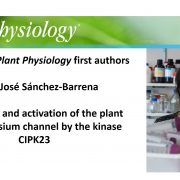
Recognizing Plant Physiology authors: María José Sánchez-Barrena
Plant Physiology, Plant Physiology: Author ProfilesMaría José Sánchez-Barrena, first author of Recognition and activation of the plant AKT1 potassium channel by the kinase CIPK23
Current Position: Associate Scientist, Department of Crystallography and Structural Biology, Institute “Rocasolano”, Spanish National Research Council, Madrid, Spain
Education:…
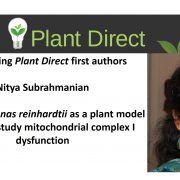
Recognizing Plant Direct authors: Nitya Subrahmanian
Plant Direct, Plant Direct: Author ProfilesNitya Subrahmanian, first author of Chlamydomonas reinhardtii as a plant model system to study mitochondrial complex I dysfunction
Current Position: Post-doctoral researcher at The Ohio State University, Columbus, OH
Education: Ph.D. in Plant Cellular and Molecular Biology at The Ohio State University,…
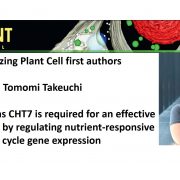
Recognizing Plant Cell authors: Tomomi Takeuchi
The Plant Cell, The Plant Cell: Author ProfilesTomomi Takeuchi, first author of Chlamydomonas CHT7 is required for an effective quiescent state by regulating nutrient-responsive cell cycle gene expression
Current Position: Post-doctoral researcher at Michigan State University
Education: BSc in Human Biology; BSc and PhD in Biochemistry and Molecular…
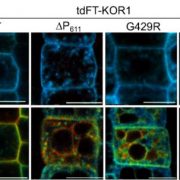
Journey and destination: KORRIGAN1 subcellular localization dynamically changes during plant growth and stress tolerance
Research, The Plant Cell: In BriefNumerous proteins coordinate the synthesis, delivery, and assembly of cell wall components during cell wall biosynthesis (McFarlane et al., 2014). KORRIGAN1 (KOR1) is a membrane-anchored endo-β1,4-glucanase glycoprotein involved in the cellulose biosynthesis of primary and secondary cell walls. KOR1…

A Feedforward Transcriptional Loop in Leaf Senescence
Research, The Plant Cell, The Plant Cell: In a NutshellZhuo et al. show the existence of jasmonate-activated MYC2-Dof2.1-MYC2 transcriptional loop that is involved in the promotion of leaf senescence in Arabidopsis. Plant Cell https://doi.org/10.1105/tpc.19.00297
By M. Zhuo, Y. Sakuraba, and S. Yanagisawa, The University of Tokyo, Japan
Background:…

Preparing your Manuscript for Submission
Blog, Plantae Webinars, Pubs Pages, Science Communication, Webinars0 Comments
/
Preparing your Manuscript for Submission
Recorded Tuesday, February 4, 2020
About This Webinar
In this webinar, ASPB Features Editor Mary Williams will outline the key steps in writing a paper, preparing figures, and navigating the submission process. Topics include how to frame the…

Adapting to high light: At a different time and place?
Plant Physiology, Plant Physiology: News and Views, ResearchWhen rays of light enter a plant cell, they find their way to the chlorophyll pigments located in the chloroplast. Chlorophyll molecules are embedded in the light reaction complexes photosystem I (PSI) and photosystem II (PSII), which capture and store the energy needed for carbon fixation in the Calvin…
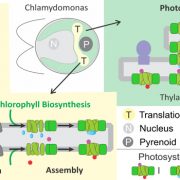
The photosystem factory in chloroplasts
Research, The Plant Cell, The Plant Cell: In a NutshellSun et al. reveal the subcellular organization of photosystem biogenesis in Chlamydomonas. Plant Cell https://doi.org/10.1105/tpc.19.00263
by Melissa Valente-Paterno, Yi Sun and William Zerges. Department of Biology, Concordia University.
Background: Cells localize intracellular processes to…
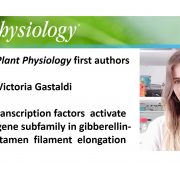
Recognizing Plant Physiology authors: Victoria Gastaldi
Plant Physiology, Plant Physiology: Author ProfilesVictoria Gastaldi, first author of Class I TCP transcription factors activate the SAUR63 gene subfamily in gibberellin-dependent stamen filament elongation
Current Position: PhD student at Instituto de Agrobiotecnología del Litoral (CONICET-UNL), Santa Fe, Argentina
Education: Bachelor's…

